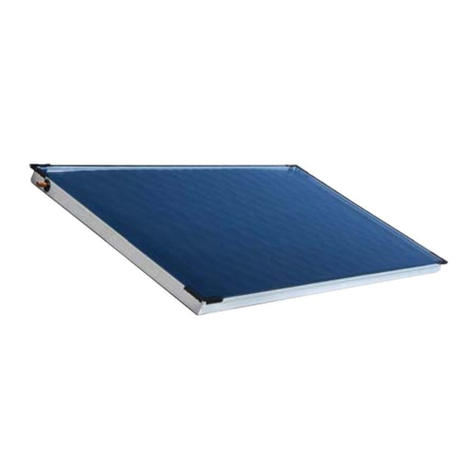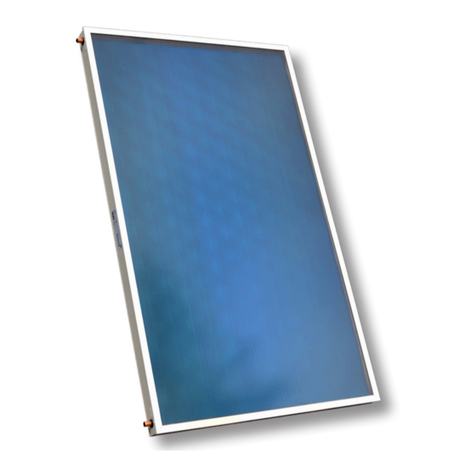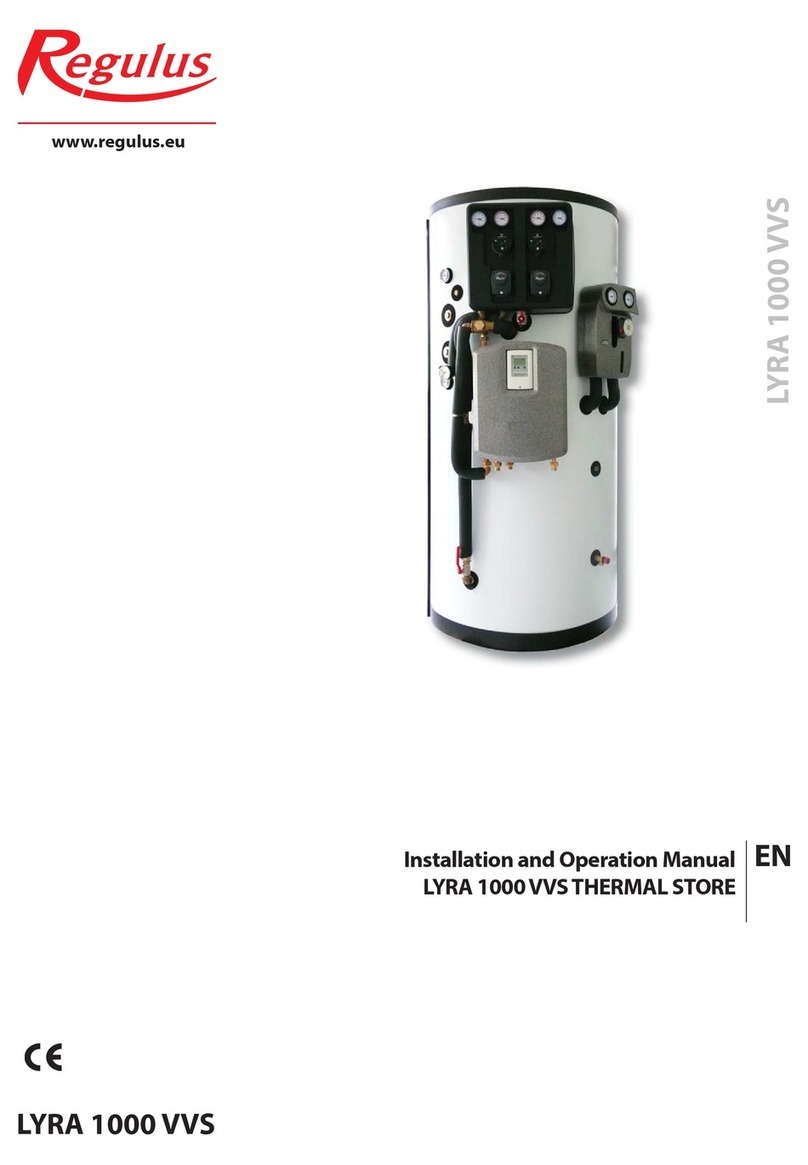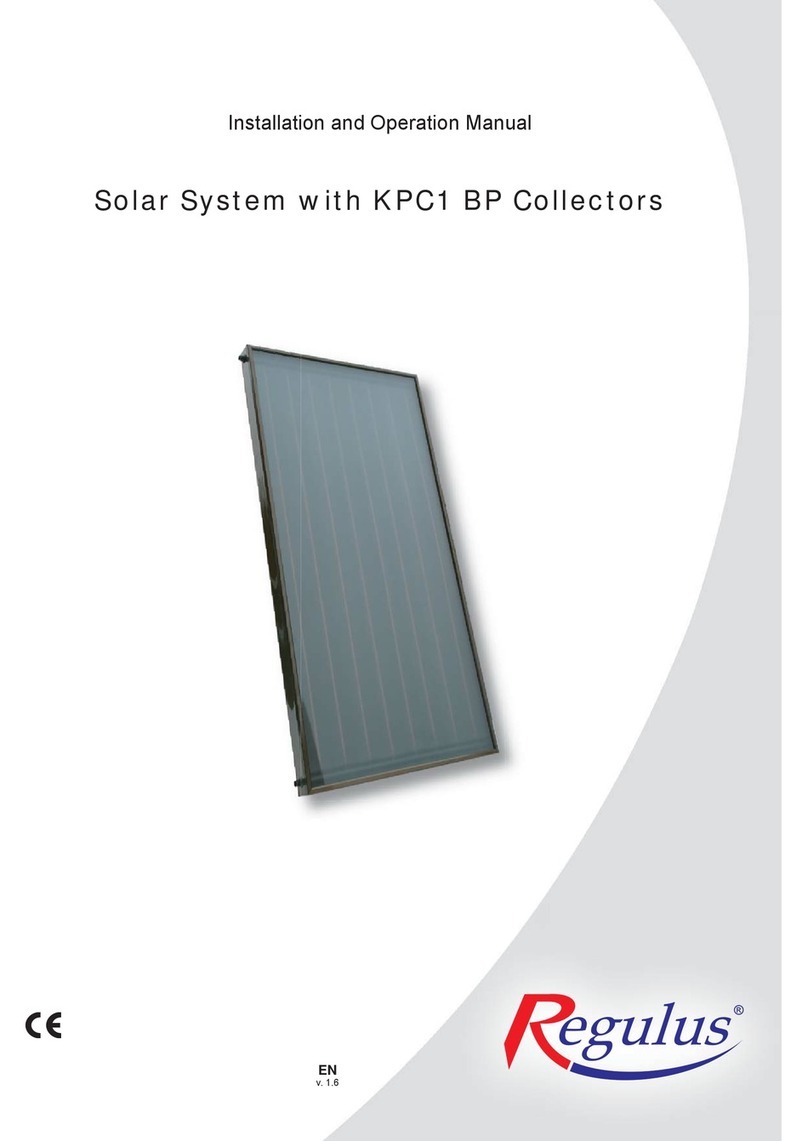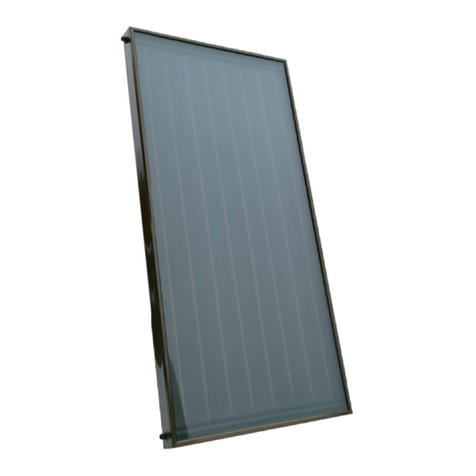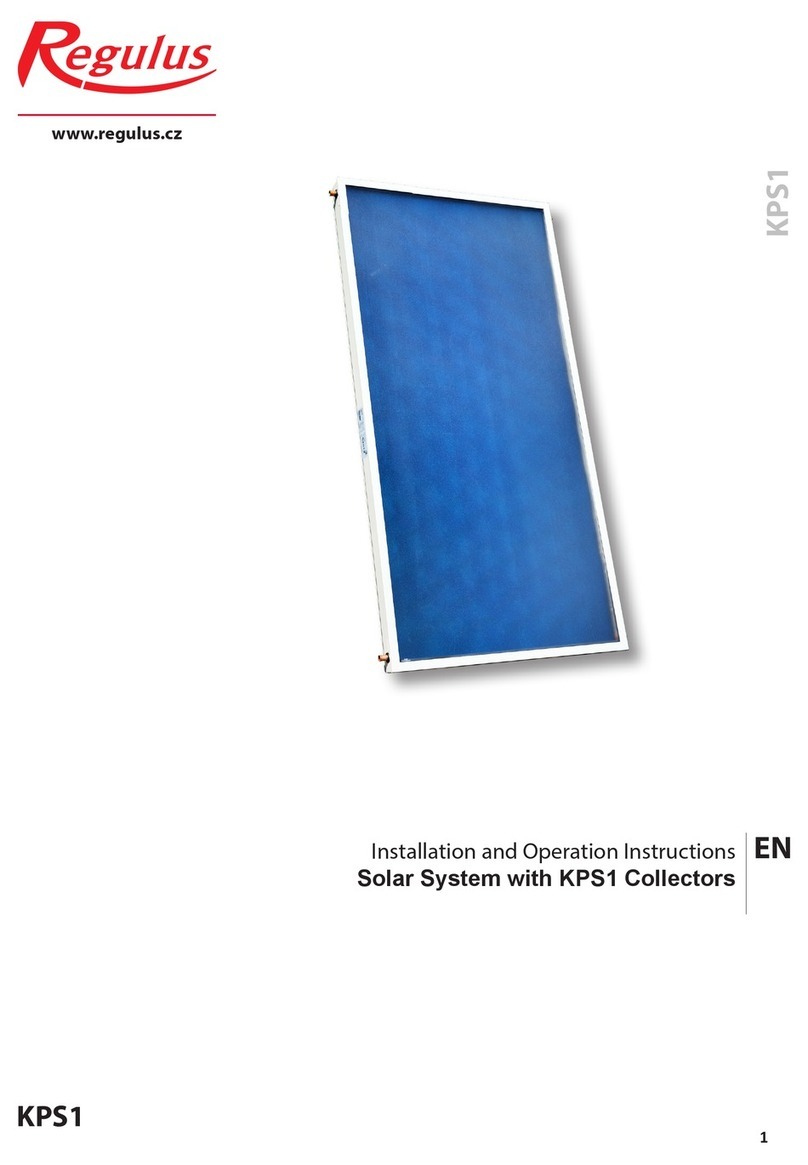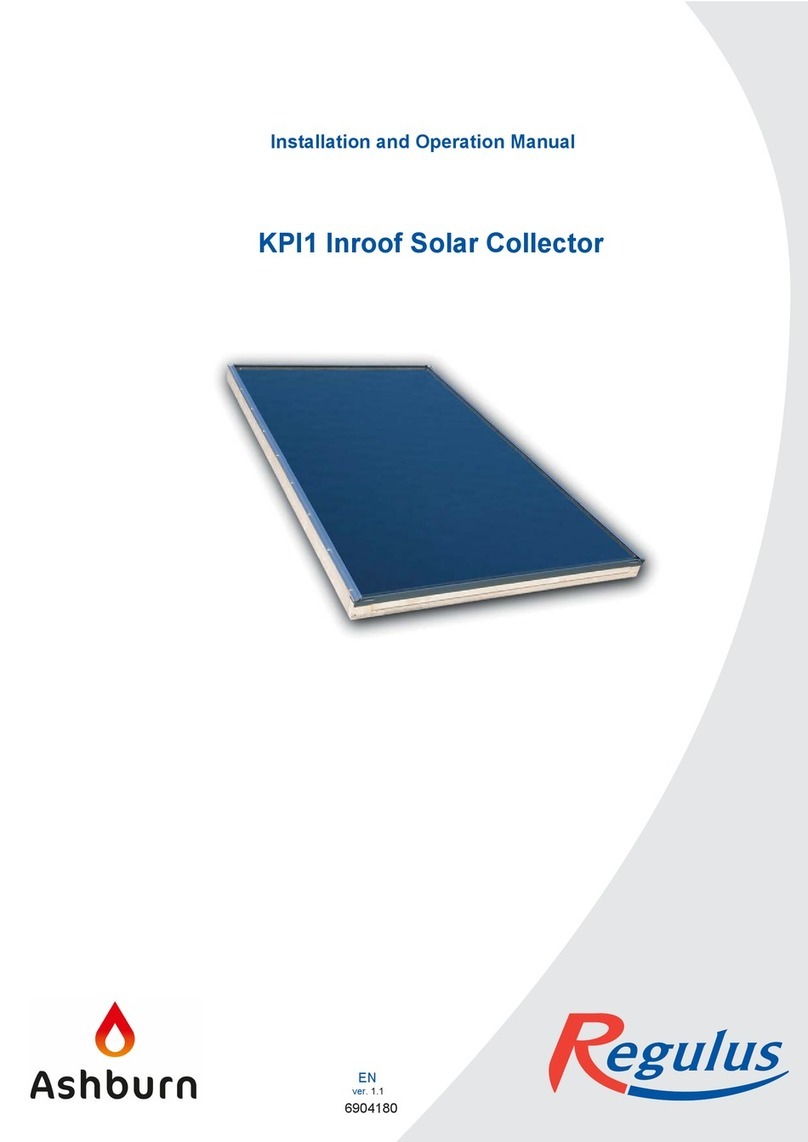3
Collector description
REGULUS Flat Solar Collectors are designed for solar
domestic hot water heating (DHW), backup- and pool
heating with solar energy. Solar radiation penetrates the
glass and is intercepted by an efficient absorption layer
applied on an all aluminum absorber. The heat is then
transferred into heat transfer fluid. The absorber is sea-
led in a compact frame with high quality thermal insulati-
on. The collectors are designed for year round operation,
that’s why they work in a separate primary circuit filled
with antifreeze heat carrier.
The collectors are not intended for direct wa-
ter heating. If different heat transfer fluid is used
than specified by the manufacturer, irreversible
damage to the collector may be done.
Transport, handling and storing
Collectors shall be transported in their original packing,
in upright position (standing on their shorter side) or lying
horizontal with glass upwards, stack of max. 14 pieces
on a pallet.
During handling the collector glass shall be always
facing upwards.
Please check the condition of the collector upon recepti-
on from your supplier or forwarder. Later claimed mecha-
nical damage (frame, glass, connection) will be refused.
When stored, the collector shall not be exposed to rain
and its absorber exposed to solar radiation.
Scope of supply
1. KPG1-ALC collector
2. Instruction manual
3. Warrant Certificate
General instructions for installation
The installation must be done by a trained worker or a
specialized company.
During installation and before commissioning, it is
necessary to cover collectors in order to avoid overhea-
ting and possible burn injury to the installer.
Prior to installation, conditions set by the roofing manu-
facturer and the max. permissible roof load shall be
checked.
Mounting method for solar collectors shall always re-
spect local conditions, i.e. roof inclination and weather
influence on the overall load on the collector. Kindly con-
sult the fastening method with a structural statics expert.
During installation the collectors and accessories shall
be handled carefully. Defects caused by improper hand-
ling or DIY installation are not cover by warranty.
Generally valid rules and standards for occupational
safety shall be respected during installation. This con-
cerns mainly technicians walking on a roof and the secu-
ring the area against objects falling down from a roof.
Only REGULUS mount elements may be used. Other
fastening elements may be used only with a written
approval from REGULUS company.
Collectors shall not be exposed to solar radiation un-
til commissioned. The absorption surface may get
damaged.
Collectors shall be installed and operated in compliance
with this Manual and with respective generally valid rules
and norms.
Collector placing
The collector must be placed outdoors. The glass
absorption surface should be orientated to South, with
deviations not over 45° (Southwest or Southeast). For a
year round operation the right inclination angle is 40°-
50°, for summer operation smaller inclination is better
(30°).
Collectors are installed according to marking.
The collectors shall be installed at an angle
between 15° and 75°.
On inclined roofs it is recommended to install
solar collectors as close to the roof ridge as possible.
Should this solution be impossible, then protections
against snow slide shall be installed above the collec-
tors.
The numbers of roof anchors shown in the Mount Kits
for Fitting and Connecting Regulus Solar Collectors are
designed for the following load:
Max. permissible snow and wind load ≤1,8 kN/m2
Max. permissible wind load - negative pressure ≤1,0 kN/m2
The customer/user shall be informed about this fact prior
to starting installation of a solar system. If a higher load
than shown above is expected in the area in question, a
statics expert shall be consulted and more roof anchors
designed, or other measures taken that would ensure
safe collector fitting. Regulus refuses any responsibility
for damage caused by wrong design of collector faste-
ning.
GENERAL INSTALLATION AND OPERATION INSTRUCTIONS






